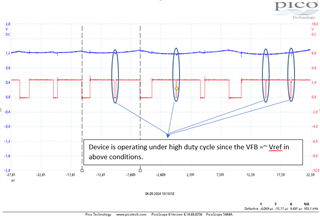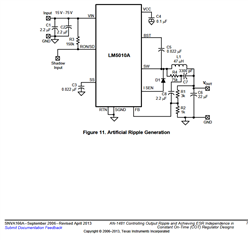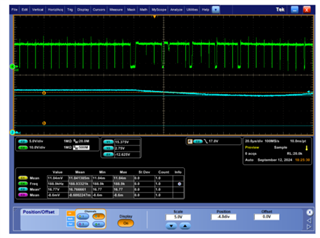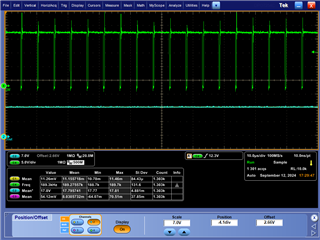Other Parts Discussed in Thread: LM5012
Tool/software:
Hi to all,
i did a new design with LM5012 which works mostly fine. The only issue is, that the circuits switch to an intermittent operation after a while (see oszi picture below, 10:1 divider) at a input voltage of 19,2...19,5V. This happens after 15min operation, so i think it's an temperature issue? When cold, most circuits are working correctly even at 17,5V input voltage. The "warm" circuits are operating correctly at a voltage of 22V, which ist too high.
Data:
Uin: 19,2V to 57,6V
Uout: 18V
Iin: 500mA at 24V Uin
Switching frequency: 200KHz
Looking forward for some helping hints - thanks in advance





